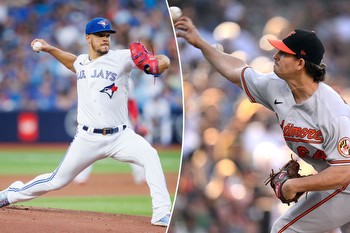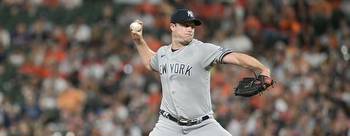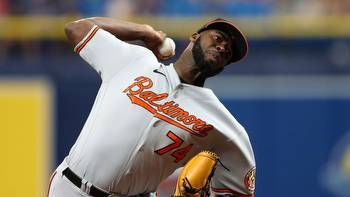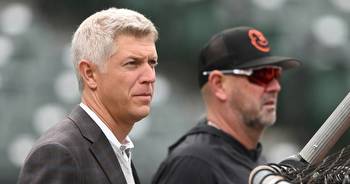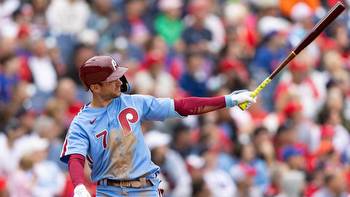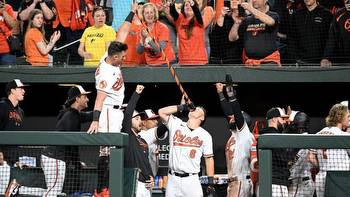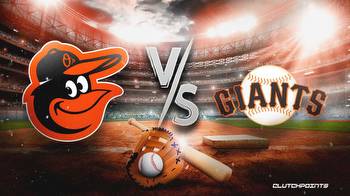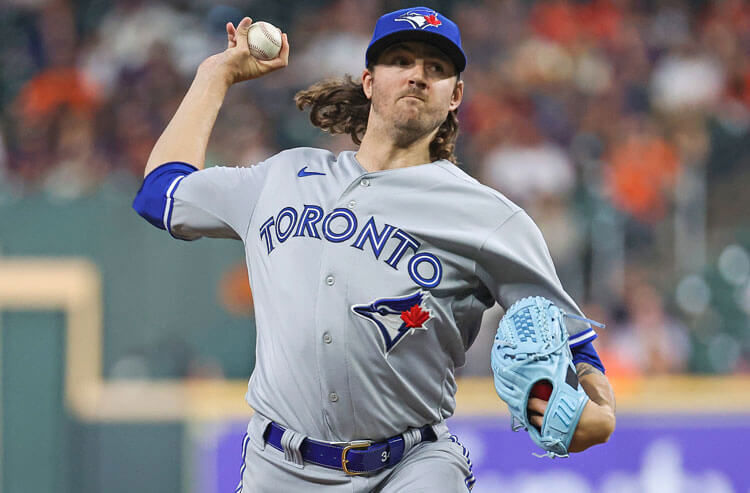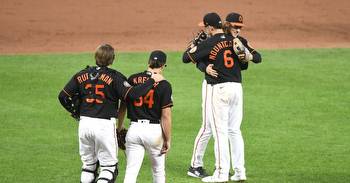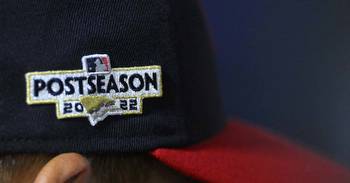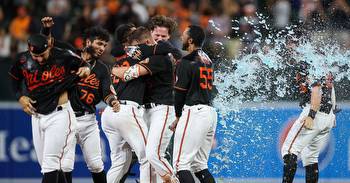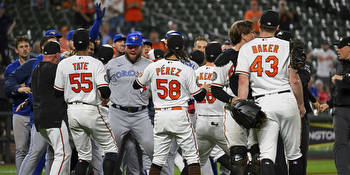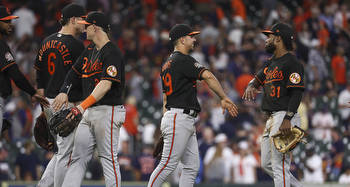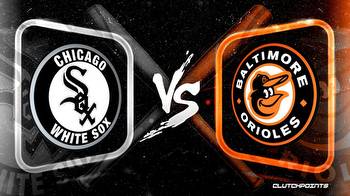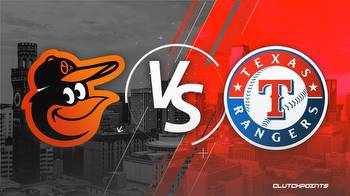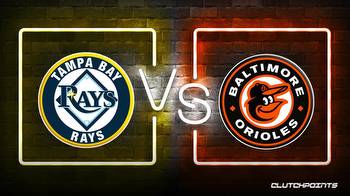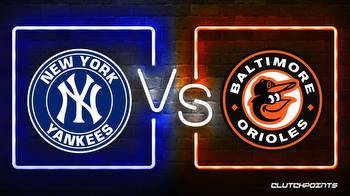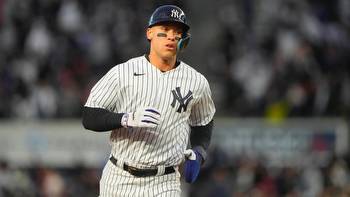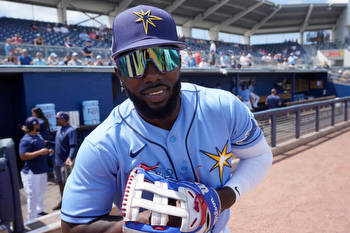Wait, FanGraphs Is Too Low on the Orioles Again?!

The Orioles have a tight grip on the AL East race. With time running out on the season, they have a 2.5 game lead on the Rays with the tiebreaker in hand; the division title comes with homefield advantage throughout the AL playoffs. Their +127 run differential is the third-best in the AL. So then why oh why do we at FanGraphs think they only have a 5.5% chance of winning the World Series, worse than the Astros and Rays and just ahead of the Blue Jays and Mariners?
It’s happened two years in a row now. FanGraphs keeps doubting the Orioles, and they keep winning. But don’t you worry, disgruntled O’s fans. As the resident Orioles believer – I picked them to win their division before the season, even if that was mostly a statement that they were underrated rather than a sincere belief that they were the best team in the East – I’m here to dig through the madness and see what’s going on.
First things first, in these “why don’t the odds believe in my team?” articles, it’s always good to walk through how the odds work. They’re quite straightforward, though straightforward isn’t the same thing as simple. We start at the player level, averaging the Steamer and ZiPS projections to come up with projections for every player in baseball. Then we manually build a depth chart for each team. From there, we stitch those pieces together to come up with team-level offensive, defensive, and pitching projections. We plug those into the BaseRuns formula and get projections of how many runs per game each team will score and allow, then convert those to expected winning percentages using Pythagenpat expectation.
In plain English, we use two computer systems to estimate how good every player is, then use human expertise to figure out how much each player will play. That gets us to how good each team is. Easy! After that, we simulate out the season and playoffs 20,000 times, and that’s how we end up with the odds. Why don’t our odds like the Orioles more? It’s going to be because of one of those parts.
Before I delve into which part is driving the divergence between our projections and the consensus, let’s talk about the consensus. Betting markets have the Orioles as the fourth most likely team to win it all this year, behind the Braves, Dodgers, and Astros. After accounting for the fact that World Series odds add up to more than 100% (that’s how sportsbooks work), the odds have them around 10% to win it all. That’s nearly double our odds; clearly something is out of whack.
Okay, back to figuring out what’s causing our odds to throw shade on the Orioles. We can rule one thing out right away: It’s not the playing time projections. You can see those right here, and there’s just nothing weird there. The hitters projected for the most plate appearances are Gunnar Henderson, Anthony Santander, Cedric Mullins, and Adley Rutschman. The O’s have 11 games left, and we’re projecting their six-man rotation to handle all of them. Their best relievers have the most projected relief innings. You could stare at these all day and struggle to find anything even slightly odd.
Is our process that converts team statistics into team strength wrong? I’m not going to spend much time on this one because I don’t find it to be a credible complaint. BaseRuns is a complex formula, but the thing it does is quite intuitive: It converts granular results, like homers, doubles, walks, and fly outs, into runs. It includes baserunning. We fold defense in on the pitching side. And even if there were something wrong with it, that would affect every team, not just the Orioles.
That lands us, as it always seems to, with the projections. Let’s put it this way: So far this year, the Orioles have scored 5.13 runs per game and allowed 4.29. The rest of the way, we think they’ll score 4.78 runs per game and allow 4.65. So yeah, our projections just think that the team will be worse going forward than it’s been so far in 2023.
I’ll admit that before I started diving in, I was skeptical of those projections. I know that our odds work well in the aggregate because I’ve tested them. In the long run, we do a pretty good job; the general methodology is solid. Projection systems do a good job in the long run, too. Starting with an idea of how good each player is and adjusting that incrementally based on how they perform in-season yields logical results. Projection systems don’t get too hyped about Elly De La Cruz, something I’ve been guilty of. They don’t get too down on Julio Rodríguez when he starts slowly. On a long enough time horizon, they’re generally right. But could they be wrong this time?
As it turns out, I think they do an excellent job of projecting Baltimore’s offense going forward. So far this year, the Orioles have scored a boatload of runs, as I mentioned. But they’ve done so unsustainably, at least in my estimation. So far this season, they’ve batted .258/.323/.430 as a team. We think that they’ll bat .254/.323/.424 the rest of the way, essentially the same line. The thing is, they’ve scored runs like a team with a far better batting line.
Some of that comes down to baserunning; the Orioles have added roughly 12 runs on the basepaths this year according to our calculations, and we think they’ll be average going forward. That feels wrong to me; I doubt our projections are great at predicting baserunning, and the O’s have been good at it all year. But for the most part, they’re just cashing in runs at a crazy rate. They have the sixth-best batting average in baseball, but the best batting average with runners in scoring position (.288!). With runners in scoring position and two outs, they’re second in the majors. They’re third in wOBA with RISP as compared to 10th overall. With runners on base, their slugging percentage jumps by 23 points, as opposed to eight points for all teams in aggregate.
I just gave you the simple statistics describing how well the Orioles have done when the chips are down, but there’s a fancier way to think about it too. BaseRuns takes everything about an offense into account – how often runners take an extra base on hits, how often the team puts the ball in play, sacrifice fly rate, whatever you can imagine – and tries to figure out how many runs the team will score given those inputs. It thinks that the Orioles “should” have scored 4.81 runs per game so far this year. In other words, if the O’s keep hitting like the O’s, but lose their distribution of having more good outcomes with runners on base, they’ll perform basically like our projections.
Does this mean that we think they’re just getting lucky? I think that misunderstands what “luck” means. The Orioles have earned those runs. It’s not luck when you clobber a home run or lace a double; in fact, it’s overwhelmingly skill. But when you happen to do it, the temporal distribution of your results? It’s fortunate to have them in good spots. No one’s denying that the Orioles have risen to the occasion this year, and I think calling that luck is unfair. But I also don’t think they have an innate talent for doing that, and well, neither do an overwhelming number of studies of “clutch” in baseball over the years.
Okay, so I understand our offensive projections, and why the Orioles fall short of what you might expect from a cursory look at the team’s run scoring. On the pitching side of things, however, further digging is required. As I mentioned up above, the O’s have allowed 4.29 runs per game. Per BaseRuns, they “should” have allowed 4.36 runs per game. There’s not much of a discrepancy there. Yet our projections think they’ll be worse by a third of a run going forward. Weird, no?
Our projections disliked Baltimore’s pitching heading into 2022. We kept projecting the pitching staff to falter, and eventually, it did. This year is a different matter. Here are the actual and projected stats for the first 11 pitchers in our depth chart:
Orioles Projected Pitching ROS
Yeah, uh, those projections mirror what’s already happened almost perfectly. If you take those pitchers’ actual 2023 ERAs and pro-rate them across our projected innings, you’d get an aggregate 4.18 ERA. If you instead look at their projections, you’d get an aggregate… 4.15 ERA. Across the majors as a whole, RA/9 is roughly 0.35 runs higher than ERA, and the O’s have a worse-than-average defense according to Statcast, so maybe you can adjust that up to 0.4 runs per game or so. Now we’re getting pretty close to the 4.66 number we’re projecting them to allow; throw in the lower-leverage members of the bullpen, and we’re basically there.
But it’s really not the guys who are in our projections that are causing the disconnect between the O’s season so far and the rest of the year. No, what’s hurting Baltimore in the projection of runs allowed is that Félix Bautista is missing. So far this year, he’s pitched 4.5% of their total innings and allowed only 2.2% of their runs. If you had replaced his innings with an up-and-down reliever, their team ERA would have increased by roughly 0.15. We also think Cano will get proportionally fewer innings the rest of the way. The same goes for a lot of Baltimore’s relievers who have excelled this year.
That’s the part of the projection I’m most skeptical of, mostly because I think the Orioles do a great job of maximizing their bullpen. The Bautista injury is a real headwind, but I think that we’re missing the boat slightly on the rest of Baltimore’s relievers. I’m not sure how I’d fix this in the projections, because the way we hand out innings works pretty well, but I wouldn’t bet against the team getting the most out of their relievers. Put another way, we project that unit for an aggregate 4.09 ERA the rest of the way, and non-Bautista Orioles relievers have amassed a 3.86 ERA so far this year. I like their odds of continuing that trend.
So when you put all of this data together, what’s the conclusion? I’d say that our projection system slightly underrates the Orioles, largely because I expect their bullpen to perform better than our estimates even without Bautista available. If he is available, as Brandon Hyde suggested over the weekend, that would of course be a huge boost. We’re not projecting much from him – how could you? – but that’s something to keep an eye on.
On the other hand, I think that betting markets are a bit too high on the O’s. This isn’t like last year where our projections were alone on an island and not buying real improvements the team had made. Heck, Baseball Prospectus thinks they’ll outscore their opponents by a single run the rest of the year, and they’re using completely different methodology. Our projections have caught up to the performance, because they incorporate it. The Orioles have posted the underlying metrics of a winning team all year, and so we expect them to keep showing off a solid offense and good bullpen.
The truth, as is so often the case, likely lies somewhere between our naive model and the suggestible public. I do think we’re too low on the Orioles’ run prevention. I think that the general public is too high on their run production. I tried to back into a new projection after accounting for their bullpen being slightly better than our estimates, and that gets me to 7.2% World Series odds. It’s not a huge difference, and you could probably talk me into going a bit higher by highlighting some individual players, but “halfway between FanGraphs and Vegas” sounds about right to me.
Still, I hope I’m wrong about Baltimore’s offense. It’s been fun to watch them crank out wins all year. They’re a blast on the basepaths. Cedric Mullins is just delightful across the board. But saying they’re the 10th-best offense going forward, when they’ve been the sixth-best so far this year, doesn’t feel unduly harsh to me. The Orioles are awesome, and the odds here at the site are probably underrating them. It’s just not for the reasons you’d think, and not by as much as you’d expect, at least in my biased opinion.

